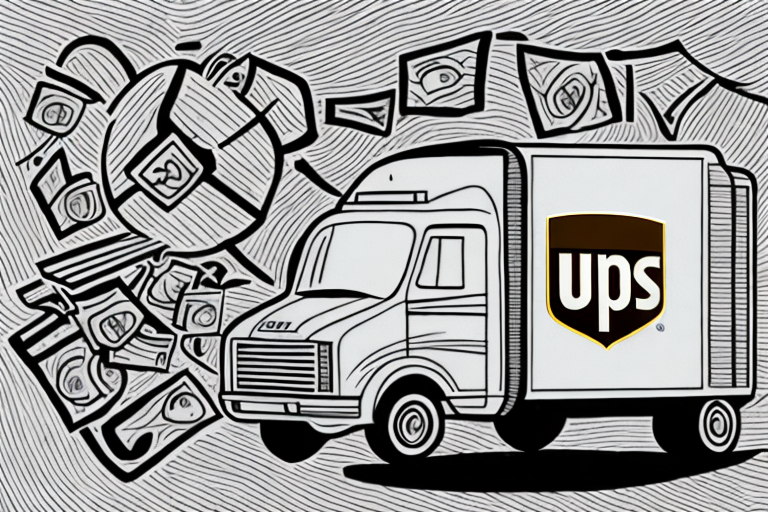Understanding Package Returns
Receiving a package is always an exciting experience, but encountering a returned package due to a wrong address can be disheartening. Understanding the underlying reasons for package returns is crucial in preventing future issues and ensuring successful deliveries.
Common Reasons for Package Returns
- Incorrect Address Information: Typos, transposed numbers or letters, and missing details like apartment numbers.
- Unclaimed Packages: Packages not picked up within the carrier's holding period.
- Package Refusal: Recipients refusing the delivery for various reasons.
- Customs Issues: Delays or rejections in international shipments due to regulatory requirements.
Statistics on Package Returns
According to the United States Postal Service (USPS), approximately 5-10% of all packages are returned to the sender, with address-related errors being the primary cause.
Common Address Mistakes
Address inaccuracies are a leading cause of package returns. Being aware of common mistakes can help in avoiding them:
- Typographical Errors: Misspelling street names or cities.
- Transposed Numbers/Letters: Switching digits or letters in the address.
- Incorrect ZIP Codes: Using an invalid or outdated postal code.
- Omitting Apartment or Suite Numbers: Leaving out essential details for multi-unit buildings.
Ensuring that all address components are accurate and complete before shipping can significantly reduce the chances of returns.
Correcting Address Errors
Immediate Actions to Take
If you realize that you've provided an incorrect address, act swiftly to correct it:
- Contact the Sender: Inform them of the mistake and request an address update.
- Reach Out to the Carrier: Depending on the carrier's policies, you may be able to update the address directly.
Be aware that some carriers may charge a fee for address corrections, and changes might not be possible if the package is already out for delivery.
Preventing Future Address Errors
To minimize the risk of future address-related returns:
- Double-Check Information: Review all address details before finalizing orders.
- Use Address Verification Tools: Many carriers offer online tools to validate addresses.
- Keep Address Records Updated: Regularly update your address information with key contacts and services.
Steps to Take When a Package is Returned
Contacting the Sender and Carrier
When a package is returned, promptly reaching out to both the sender and the carrier can expedite the resolution process:
- Sender: They can provide insights into the return reason and initiate a reshipment if necessary.
- Carrier: They can offer tracking updates and clarify any delivery issues.
Solutions If You Cannot Reach the Sender or Carrier
If you're unable to contact the sender or carrier:
- Visit the Carrier's Local Office: Sometimes, in-person visits can yield better results.
- File a Claim: Many carriers allow you to file claims for lost or misdelivered packages.
- Dispute Charges with Your Payment Provider: As a last resort, you might consider disputing the charge, though this can affect your credit and relationships with merchants.
Legal and Financial Implications
Legal Rights and Options
Consumers have specific rights when dealing with returned packages:
- Consumer Protection Laws: Protect against unfair business practices related to shipping and delivery.
- Insurance Claims: If your package was insured, you might be eligible for compensation in case of loss or damage.
For detailed guidance, refer to resources like the Federal Trade Commission (FTC).
Cost of Package Returns
The financial burden of package returns can vary:
- Sender-Paid Returns: Some businesses offer free returns to enhance customer satisfaction.
- Recipient-Paid Returns: In cases of address errors or refusals, the recipient may bear the return shipping costs.
- Carrier Fees: Additional charges for redelivery or address corrections.
Understanding who is responsible for these costs can help in negotiating returns and reshipments effectively.
Special Considerations
International Shipments
International deliveries introduce additional complexities:
- CUSTOMS Regulations: Each country has specific import requirements that must be met.
- Extended Delivery Times: Increased transit times can heighten the chances of address-related issues.
For comprehensive guidelines, consult the U.S. Customs and Border Protection (CBP).
Handling Fragile Items
Fragile packages require extra care to ensure they reach the destination intact:
- Proper Packaging: Use adequate cushioning materials to protect contents.
- Clear Labeling: Mark packages as fragile to alert carriers.
- Insurance: Consider insuring valuable or delicate items against damage.
Tips for Successful Deliveries
Implementing best practices can enhance the likelihood of successful package deliveries:
- Use Secure Addresses: Opt for business addresses or trusted neighbors to reduce theft risks.
- Sign Up for Delivery Notifications: Stay informed about your package's delivery status in real-time.
- Inspect Upon Delivery: Check for damages or tampering before accepting a package.
- Maintain Delivery Records: Keep tracking numbers and delivery confirmations for reference.
By adhering to these strategies, you can minimize delivery challenges and ensure a smoother shipping experience.






















